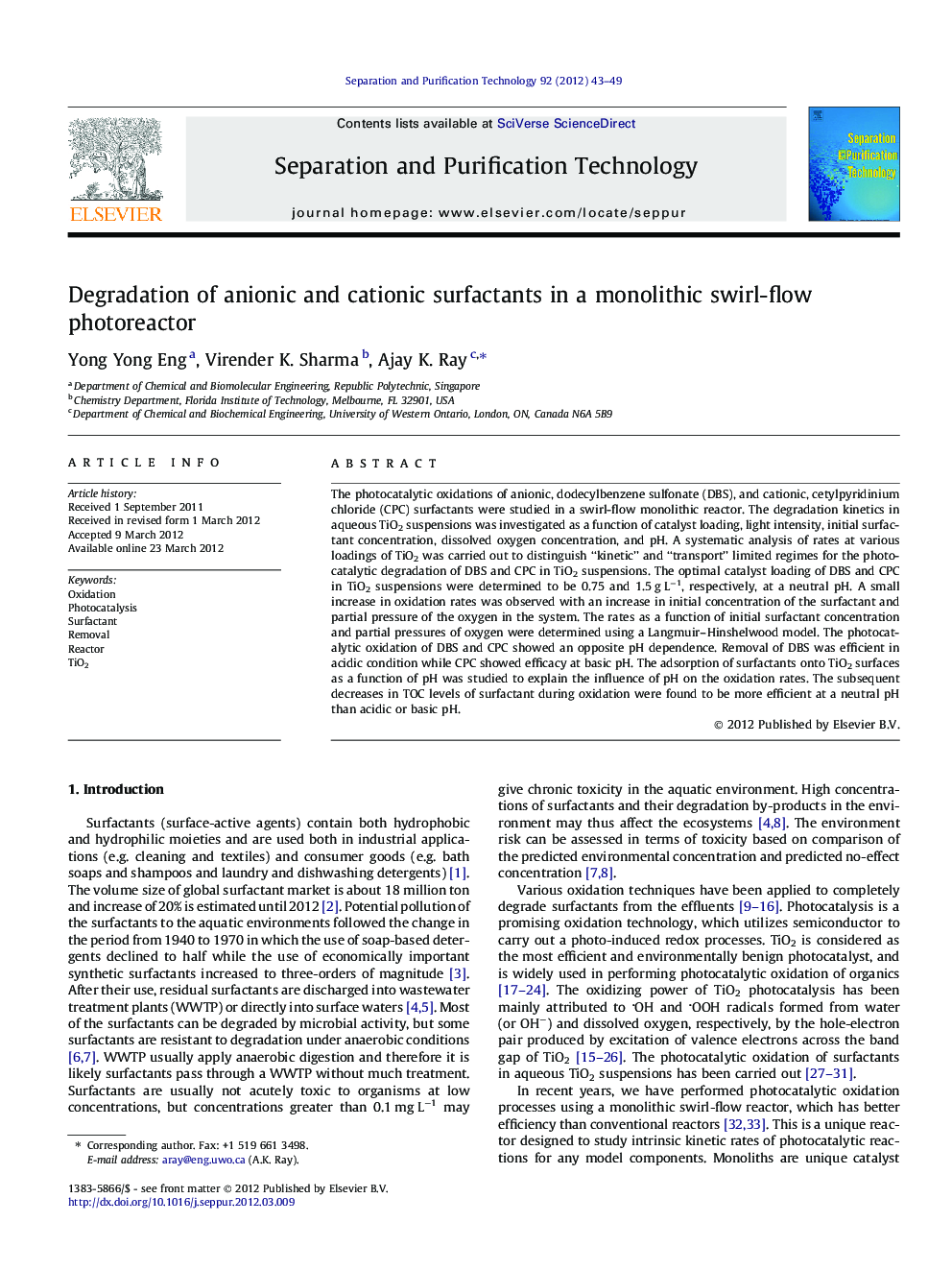| Article ID | Journal | Published Year | Pages | File Type |
|---|---|---|---|---|
| 642149 | Separation and Purification Technology | 2012 | 7 Pages |
The photocatalytic oxidations of anionic, dodecylbenzene sulfonate (DBS), and cationic, cetylpyridinium chloride (CPC) surfactants were studied in a swirl-flow monolithic reactor. The degradation kinetics in aqueous TiO2 suspensions was investigated as a function of catalyst loading, light intensity, initial surfactant concentration, dissolved oxygen concentration, and pH. A systematic analysis of rates at various loadings of TiO2 was carried out to distinguish “kinetic” and “transport” limited regimes for the photocatalytic degradation of DBS and CPC in TiO2 suspensions. The optimal catalyst loading of DBS and CPC in TiO2 suspensions were determined to be 0.75 and 1.5 g L−1, respectively, at a neutral pH. A small increase in oxidation rates was observed with an increase in initial concentration of the surfactant and partial pressure of the oxygen in the system. The rates as a function of initial surfactant concentration and partial pressures of oxygen were determined using a Langmuir–Hinshelwood model. The photocatalytic oxidation of DBS and CPC showed an opposite pH dependence. Removal of DBS was efficient in acidic condition while CPC showed efficacy at basic pH. The adsorption of surfactants onto TiO2 surfaces as a function of pH was studied to explain the influence of pH on the oxidation rates. The subsequent decreases in TOC levels of surfactant during oxidation were found to be more efficient at a neutral pH than acidic or basic pH.
► The photocatalytic oxidation of surfactants were performed to distinguish kinetic regimes and transport-limited regimes. ► The intrinsic rates for the photo-oxidation can be determined from transport-limited regime using an effectiveness factor. ► Intrinsic kinetic rates of the oxidations follow Langmuir–Hinshelwood kinetics. ► The pH dependence was found to be related to adsorption behavior onto the surfaces. ► A neutral pH condition was better than either acidic or basic solutions.
